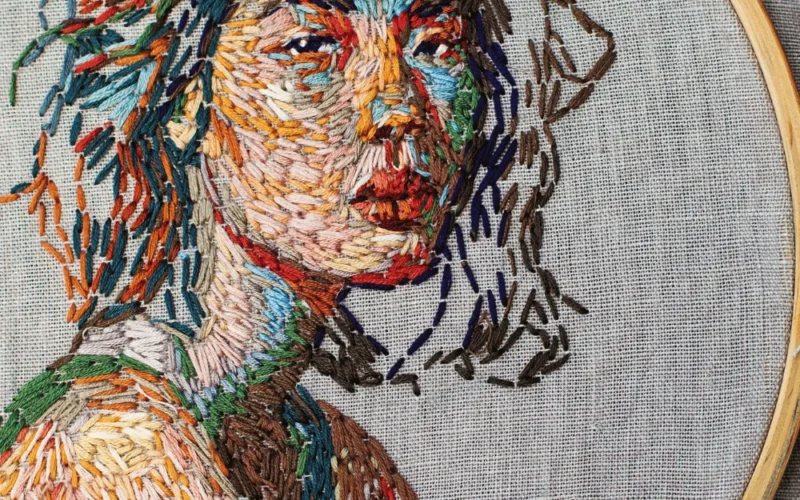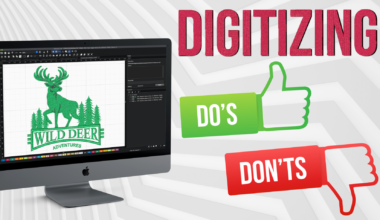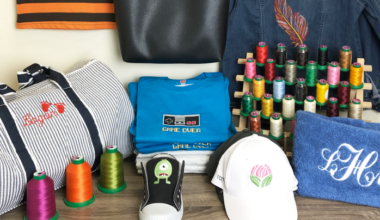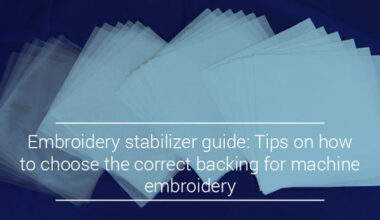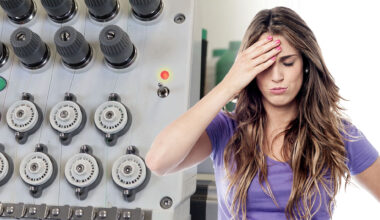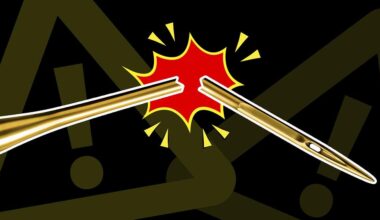You started a creative business for a reason — to get paid to do what you love! That’s why understanding the cost of embroidery per stitch is important, not just for budgeting your projects, but seeing how your projects compares to the industry standard.
Understanding Embroidery Pricing
Embroidery might seem simple, but a lot goes into determining how much it costs.
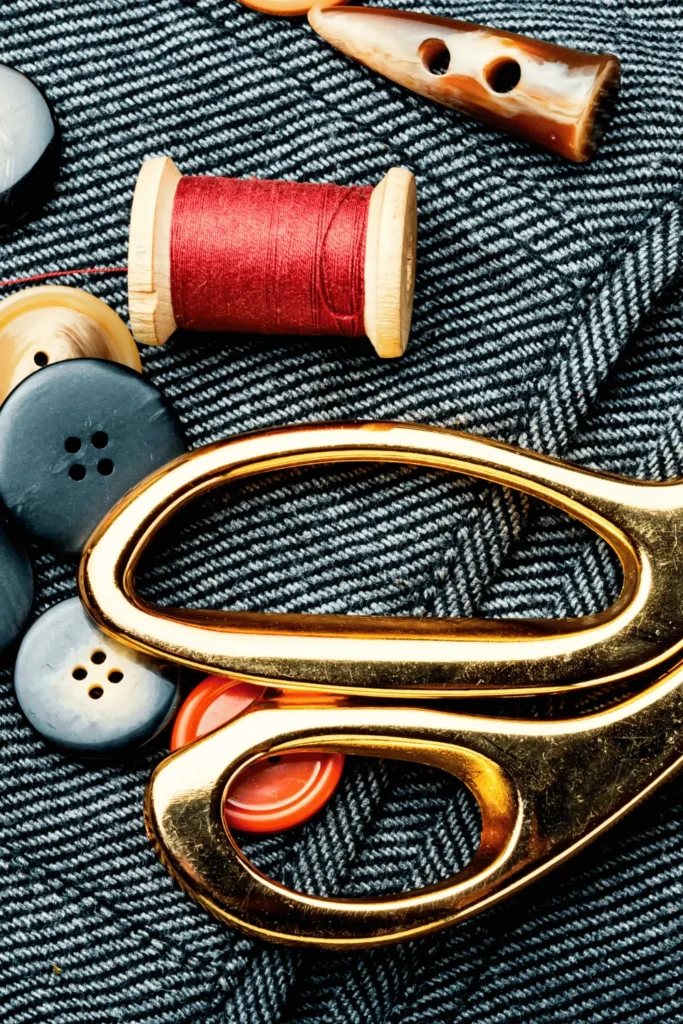
Generally, the price you pay is based on how many stitches are involved in making your design come to life, also known as the cost of embroidery per stitch.
But it’s not just about counting stitches; several factors can change how much each stitch costs you (and in fact, we actually don’t recommend charging per stitch, even though it’s a common way people look at their costs! We’ll explain this later).
Understanding these factors is key to budgeting correctly for your projects, whether they’re personal or for your business. Also, remember that not all embroidery shops charge the same rates—shopping around can sometimes save you a lot!
While many people recommend pricing per stitch, we actually advise against it, and have a fool-proof way of pricing instead. 👇
Thread Type
You might not think about it much, but the type of thread used in your embroidery can make a big difference in cost.
Basic threads like polyester usually have a more affordable cost of embroidery per stitch, while fancy threads like metallic or glow-in-the-dark are pricier.
Why? Well, specialty threads can add a unique touch to your design but also require special handling and can wear out machines quickly. Plus, not all suppliers carry every type of thread, so sometimes you might pay more just because it’s harder to get!
Complexity of Design
It’s all about the details! A design with lots of small, intricate parts, or a huge number of stitches, will have a higher cost of embroidery per stitch than something simpler (but don’t worry, this won’t be how you price!)
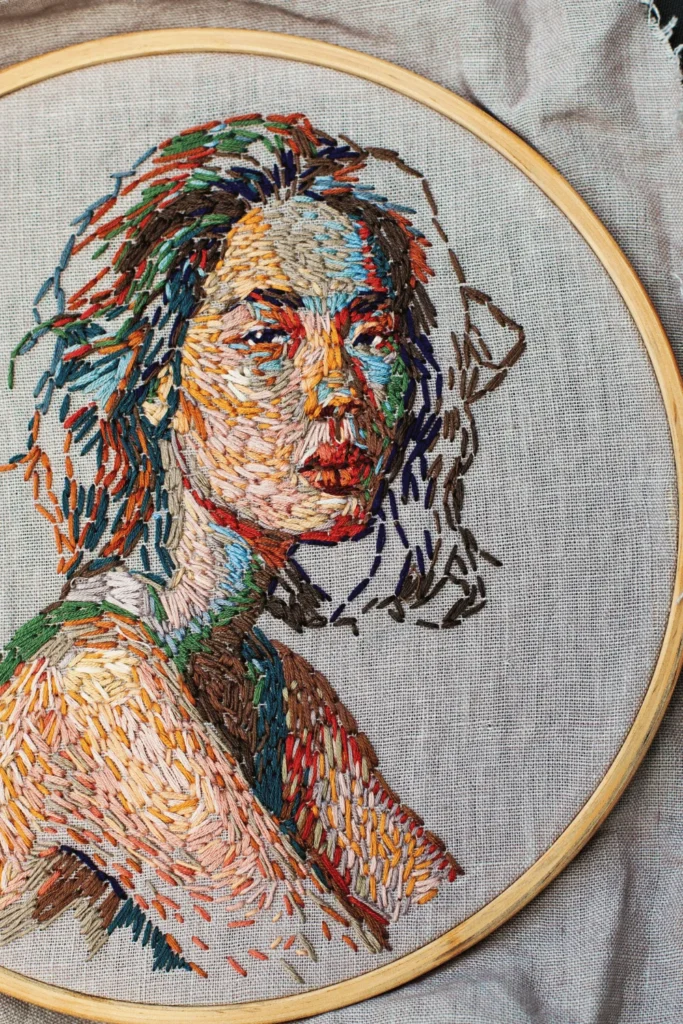
More detailed designs take longer to embroider and use more materials. For example, a basic logo might cost less than a detailed portrait of your pet.
Quantity of Order
Ordering more can actually save you money per stitch on the average cost of embroidery.
This is because most embroidery shops offer discounts when you buy in bulk. It’s like buying cereal in a large box instead of a small one — it’s cheaper per ounce.
Knowing when you’ve ordered enough to get a discount, or what’s called the ‘break-even point’, can help you decide how many items to order at once.
However, be mindful of minimum order requirements, as some places might require you to buy more than you originally planned.
Average Cost of Embroidery Per Stitch
When it comes to embroidery, the cost per stitch is a common way to set prices. Usually, this can range from $0.01 to $0.50 per stitch, depending on a few factors.
Things like the type of thread, the complexity of the design, and even where your embroidery shop is located can make a difference in the price (which is why the range is a little large). For instance, embroidery might cost more in a big city than in a smaller town due to higher business expenses.
However, while we want to be transparent with you about the general range, our community has found that the best way to price is actually not per stitch, but by a flat rate, an hourly rate, or a hybrid model! Everything you need to know about pricing is right below:
Examples of Pricing for Common Projects
Say you want a simple logo on a cap; this might use about 1,000 stitches and the embroidery cost per 1000 stitches could cost around $10.
But if you’re looking for a more detailed design on a jacket back, it might go up to 10,000 stitches, costing closer to $100. These examples show how different projects can vary in cost. Plus, hearing from others through case studies or testimonials can give you an idea of what to expect for your own projects.
Should You Charge Per Stitch? We Say NO!
So… should you charge per stitch? Ricoma never recommends business owners charge per stitch, and here’s why:
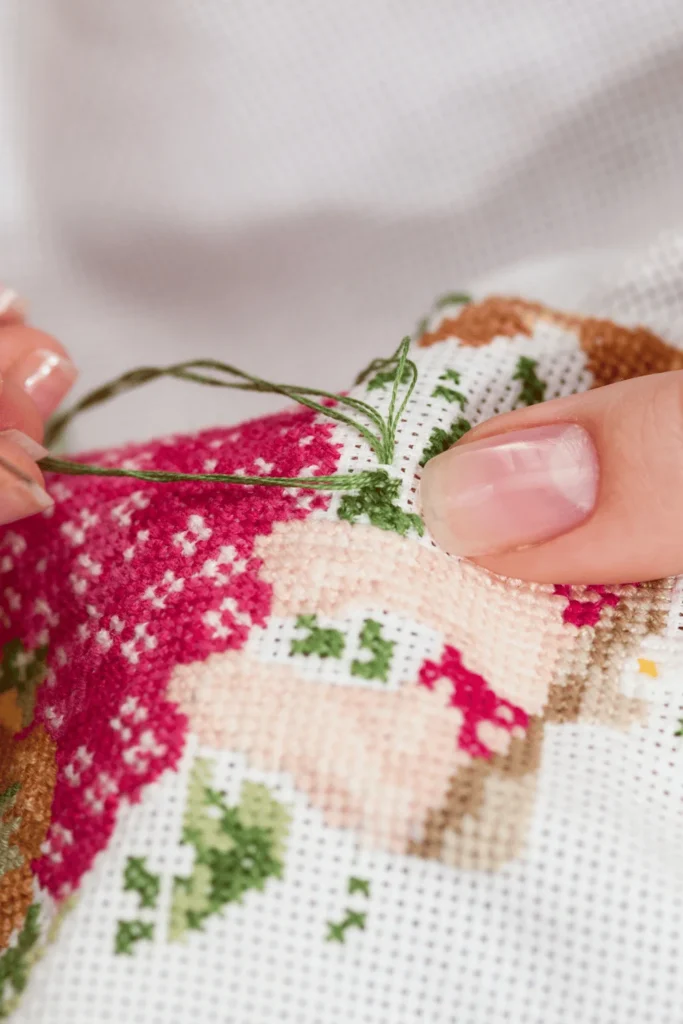
Complexity vs. Simplicity
Charging per stitch can make pricing complex and confusing for customers! Instead, offering a flat rate or tiered pricing based on design complexity, size, or garment type might be easier for customers to understand and more predictable in terms of costs.
Value Perception
Charging per stitch could lead customers to undervalue the creative and technical skill involved in embroidery. Pricing based on the overall value of the design and the service provided might better reflect the craftsmanship and creativity involved.
Inconsistent Costs
The cost per stitch can vary widely depending on the type of thread, the fabric being embroidered, and the intricacy of the design. This variability can make it difficult to set a fair and consistent rate that covers all types of projects.
Encouraging Simplicity Over Creativity
If customers know they are being charged based on the number of stitches, they might opt for simpler, less stitch-intensive designs to save money, which could limit their options and reduce the potential for more creative and appealing designs.
Efficiency Over Quality
Charging per stitch might encourage a focus on how many stitches can be completed in the shortest time, potentially compromising the quality of the work. A pricing model that allows for the time and effort required to produce high-quality results might be more appropriate.
In fact, we have our very own embroidery pricing calculator so you can take all the guesswork out of pricing your design. (Yes, it’s really that simple to start your embroidery business.)
Frequently Asked Questions: Beyond the Cost of Embroidery Per Stitch
Are there any hidden costs to consider when pricing embroidery projects?
When pricing embroidery projects, it’s important to consider any hidden costs that may impact the overall pricing. These costs could include shipping fees for materials, rush order charges, digitizing fees for complex designs, or additional fees for specialty threads.
By accounting for these potential hidden costs upfront, you can ensure that your pricing is accurate and covers all expenses.
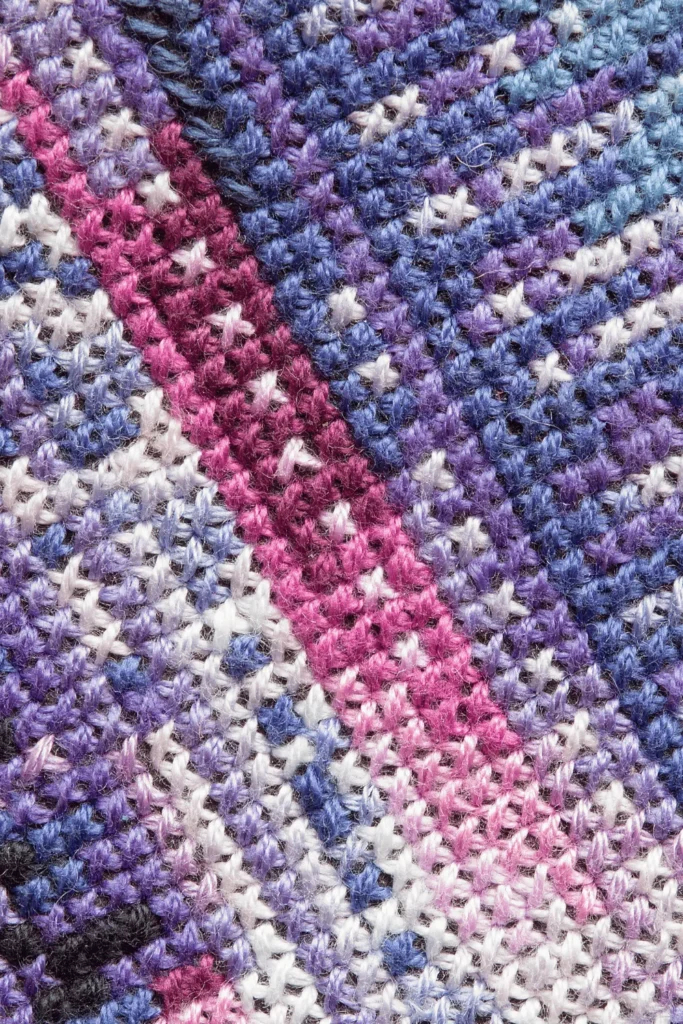
How can you accurately estimate the number of stitches in a design to determine the cost of embroidery?
While software programs can help provide an accurate stitch count, you can also manually estimate the stitch count by breaking down the design into specific elements and assigning a stitch count to each element based on its complexity. By accurately estimating the stitch count, you can better plan and budget for your embroidery projects.
What are some common pitfalls to avoid when pricing embroidery projects?
A common one is underestimating the time and materials required, leading to underpricing and potential losses.
It’s important to factor in all costs, including overhead expenses, labor costs, materials, and machine maintenance when determining your pricing structure. Also, make sure you consider market rates and competitor pricing can result in setting prices that are too high or too low, impacting your competitiveness in the market.
Explore Ricoma’s SWIFT to Launch Your Embroidery Business!
Thinking about starting an embroidery business or growing your existing one? Check out Ricoma’s SWIFT embroidery machine, a machine that’s perfect for both beginners and seasoned pros.
It’s designed to be easy to use, efficient, and cost-effective, helping you produce high-quality embroidery at a sustainable cost.
Want to learn more about all the embroidery machines options? Compare our embroidery machines to dive deeper into the cost of Ricoma embroidery machine and what they offer!
We’d love to be a part of your small business journey as you learn to price your beautiful pieces!
